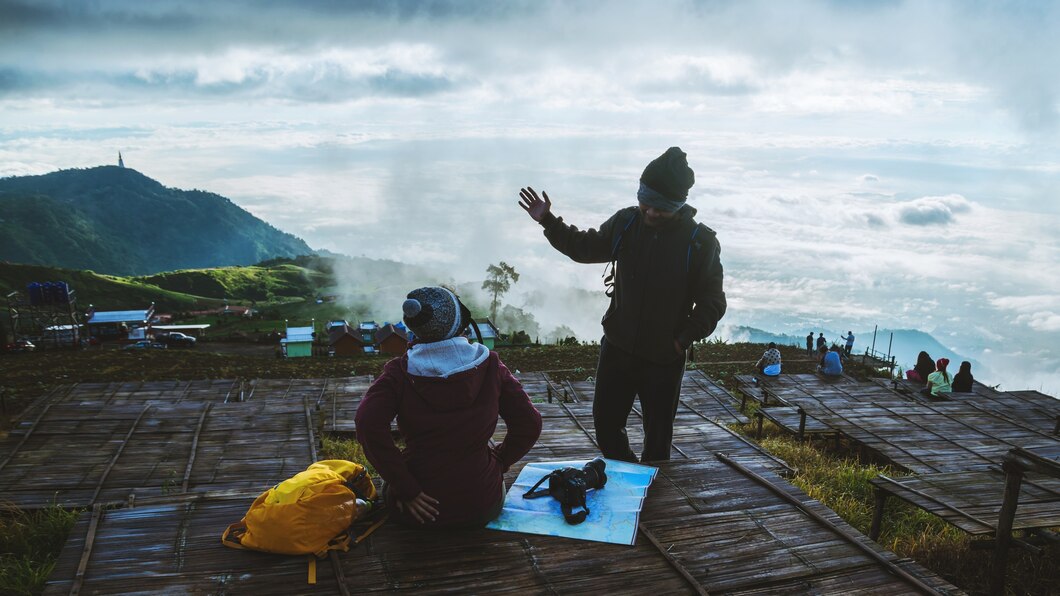Things To Do In Dallas In Winter: Travel Like A Local And Make This Weekend Happening
BY Sibashree Dec 17, 2024
Are you ready to explore Dallas for the holidays? Winter is here, making your list of things to do in Dallas even bigger and better. I was talking to a local friend, Mia. She just visited the Grapevine Bar at Butler Street last night with her boyfriend and she was all praises about the quirky bar getting into the festive spirit. She is my go-to guide whenever I need to know anything about Dallas. After knowing all she had to suggest for this weekend's fun, I also started my own research. Being a scorpion and a number 7, I had to really must have to get into the thick of it before I share an account of the things to do in Dallas with you. While checking out the Visit Dallas social pages, I indeed found that Yellow Rosa Deep Ellum, a holiday pop-up bar, is promisesing a snowfall every 30 minutes. Further, the Dallas Zoo Lights look all more amazing with a festive spirit and nip in the air. Moreover, if you are a music lover or want to watch live performances, you can attend a show at the Morton H Meyerson Symphony Center. Want to know about more things to do in Dallas in winter? Here is a Tour and Travel guide to make your winter weekend more happening. Things To Do In Dallas In Winter: Make Your Weekend The Most Happening Dallas, one of the warmer states in the USA, has a mild winter. Further, the temperature hovers around 2-14 degrees Celsius during these months. So, the weather conditions in this Texas city’s conditions are just perfect for exploring and having all the fun. However, this time, Texas in winter can be even warmer with 40-50% lesser chances of rainfall or precipitation. That’s great for people who want to visit Dallas to beat the chill this winter. Having said that, it’s time to check the best things to do in Dallas this winter. 1. Visiting A Holiday Pop Bar And Enjoying Snowfall https://www.instagram.com/p/CzuteZQo5_R/ The holiday pop-up bars in Dallas are the best place to visit when the holidays are happening. Seasonal spirits get high and you can expect the best Dallas delicacies during these days. Again, there are venues like the Yellow Rosa Deep Ellum, promiseing you artificial snowfall every 30 minutes. This year, Yellow Rosa Deep Ellum has started the Christmas pop early, with the fun beginning on 21st November. While soaking in the festive spirit here, you can try the best cocktails here, including Mestizo, Montenegro 75, Frozen Blueberry Mojito, Montenegro 75, etc. The address of the Yellow Rosa Deep Ellum address is 2901 Commerce St, Dallas, TX 75226. Further, you can reach out to them at +1 214-300-5490. 2. Taking Part In The Dallas Zoo After Dark https://www.instagram.com/p/C5Rm1zprLTV/?hl=en With December setting in, the Dallas Zoo After Dark is waiting for you. It is scheduled on 12th December 2024, and it will take place between 6-9 PM. Further, with lights from Reliant, the Dallas Zoo will glow in the darkness. You can take a stroll through the illuminated landscape. Also, as you take a stroll, don’t forget to relish the seasonal delicacies and drinks. You can even take part in the holiday games and events. Moreover, this year, Dino Projection and the Dinoland presented by Reliant will are going to be the biggest attractions. Entry Fee For the Dallas Zoo After Dark Wild LightsMembers: $25 Per PersonGeneral Public: $35 Per PersonParking: $12 Per Person 3. Taking A Ride On The Mline Trolley https://www.instagram.com/p/DBhQsNoRLUg/ McKinney Avenue Transit Authority or Mline Trolley allows you to explore the heritage of Dallas. These heritage street cars run every day, and you can ride these for free. “Our mission is to link the past to the present, providing safe, reliable, and convenient public transportation within Uptown and Downtown Dallas.”McKinney Avenue Transit Authority Providing transit services for more than 34 years, the Mline Trolley has 400,000 passengers every year. Moreover, 35% of the riders use the trolley to explore the city. So, if you have to travel to Dallas like a local, you must enjoy a ride in these trolley cars. Moreover, you will find top tourist destinations like the Dallas Museum of Art and West Village on the route. 4. Visiting The Dallas Arboretum and Botanical Garden Address: 8525 Garland Road, Dallas Contact Number: +1 214-515-6615 Hours Open: 8 AM to 5 PM The Dallas Arboretum and Botanical Garden is a 66-acre area with an extensive display of trees and shrubs. Further, this place looks resplendent with seasonal flowers in full bloom. Also, it is a chosen place for many educational events. The Dallas Arboretum and Botanical Garden Entry FeeDaytime Entry - $22 (13-64 Years), $18 (64+ Years), $13 (2-13 Years), Free for MembersHoliday at the Arboretum at Night (6-9 PM): $22-$37 (13-64 Years), $20 (64+ Years), $15-$17 (2-13 Years), $13-17 (Members) However, attending “Holiday at the Arboretum” is one of the best things to do in Dallas in winter. It’s a special or seasonal event here, and the dates for this year are 13th November 2024 to 5th January 2025. Reliant has already transformed the space into a winter wonderland. Now, it looks like a perfect Christmas Village with Gazebos. Furthermore, the event, celebrating its 10th year in 2024, is going to be even bigger and better. 5. Watching Concerts And Performances At Morton H Meyerson Symphony Center https://www.instagram.com/p/DAl3-3Qus04/?img_index=1 Address: 2301 Flora St, Dallas Phone Number: +1 214-849-4376 One of the greatest orchestra halls in the world, the Morton H Meyerson Symphony Center is a great place to visit during winter. Flaunting the best of modern architecture the Symphony Center also stands for inclusivity and equity in the field of music and otherwise. The building itself showcases a belief in touching and changing lives through music. Nevertheless, this holiday season, the most prominent events at the Symphony Center are KINGS ReJOYCE! On 11th December, Christmas Pops on 12th-15th December, Christmas At The Meyerson on 23rd December, etc. (Please refer to the events calendar forto know about more events.) Now that I have mentioned all the major things to do in Dallas in winter, I want to draw your attention to the local food scenario. Knife Steakhouse, Haywire, and Bowl & Barrel are some places you must explore to relish the festive cuisine. Also read Why Include Whale Watching In Your LA Itinerary. Traveling On A Budget: Tips For Affordable Adventures. From Cocktails To Kickflips: Must-Try Activities In San Diego.













